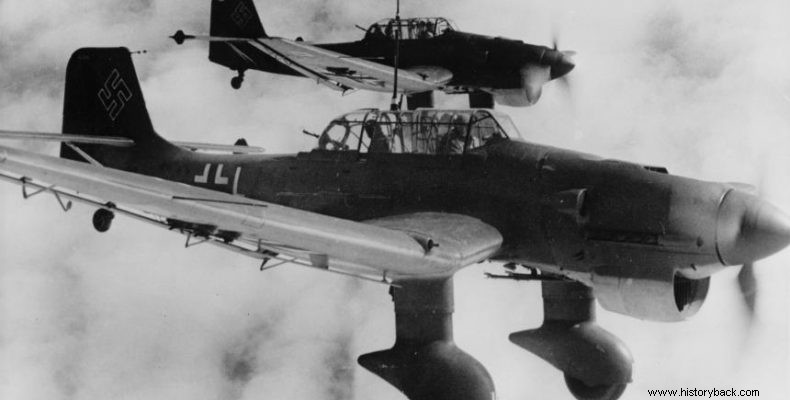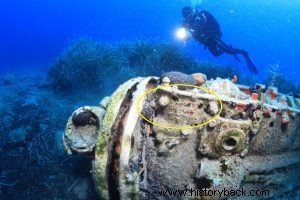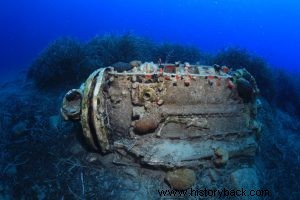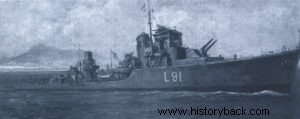
The wreckage of a German ju-87 Stuka aircraft, identified at the bottom of the Karpathos, sheds light on a tragic story from the Second World War. As it emerged from the underwater and historical research of the researcher Costas Thoktaridis and the Planet Blue team, the Junkers Stuka aircraft crashed in the sea area east of Karpathos on October 9, 1943, after a barrage of anti-aircraft fire received during a naval battle between Rhodes and Karpathos
"It had the mission of bombarding the British naval force which was sailing in the Carpathian Straits, consisting of the cruiser H.M.S. Carlisle and the destroyers H.M.S. Panther, Petard, Rockwood as well as the Greek destroyer MIAOULIS" Kostas Thoktaridis reports to APE-MPE.
According to the official figures, it was 12 and 12 first minutes when the ships received a barrage of fire from a swarm of German Junkers 87 Stuka aircraft which had taken off from Megara. The attack severely damaged the cruiser H.M.S. Carlisle (from 3 bombs aft) while the destroyer H.M.S. Panther was hit at engine room level and sank within 5 minutes.
The Greek destroyer MIAOULIS was attacked by 4 Stukas, the bombs exploded at a distance of only 20 meters. At about 12:45 the destroyer MIAOULIS, commanded by Admiral Nikitiades, showing great heroism and skill, successfully collected 188 castaways from the H.M.S. Panther (commander 5 officers and 182 petty officers and sailors). Despite a very strong anti-aircraft barrage by the Allied ships, the German Stukas returned to their base with the loss of one JU 87 aircraft.
The captured German aircraft, after a flight of 25 nautical miles over the sea, makes a forced landing on Agnodia beach east of Karpathos. The aircraft overturns, killing the pilot, NCO Siegfried Martens, and injuring the radio operator Ernst Kröger. Residents who happened to be in the area help the German radio operator to reach the CARPATHIAN port of Pigadia.
This incident, however, caused three twenty-year-old children from Spoa Karpathos to lose their lives. Emmanuel Piperis, Pachos Piperis and Emmanuel Sisamis are accused by the Germans of removing personal items from the dead pilot as well as parts of the aircraft. The accused go through a military court and are sentenced to death. Haramatas of November 4, 1943 are carried out next to the cemetery in Karpathos.
In the documentary by filmmaker and columnist Manolis Dimellas, which is available at:https://www.youtube.com/watch?v=riMve8lL_Sc , the residents of the village and relatives of the victims who experienced the tragic event of the execution of the three young people speak. In addition, shocking images are recorded of the exhumation of the bodies from the mass grave after 70 years.
However, the underwater investigation of the wreckage of the aircraft had to come to light in order to bring to light evidence leading to its identification. "The aircraft has been disintegrated and its engine remains at the bottom. But we recognized on the upper left side the serial number of the Jumo engine. In the rotor you can still see remnants of wood from the three propellers that STOUKA had" explains Kostas Thoktaridis.
Jumo 211 was a 640 kg V-12 aircraft engine located at a depth of -12 meters east of Karpathos. It was the most productive German aero engine of the war, with nearly 70,000 units in Junkers Ju 87, Ju 88, and Heinkel He 111 aircraft.
Thanks to the study of the engine by the historian of the Air Force Dimitris Vogiatzis and the historian Byron Tezapsidis who specializes in the Second World War, the identity of the crew of the aircraft became known. It is thus known that the aircraft was a Junkers stuka Ju 87D-4/Trop with side number S7+AK and serial number (Werk Nummer) s/n 110461. It belonged to the 2nd Aircraft Squadron of the 3rd Squadron StG3 (II/St.G3 Stuka Geschwader) commanded by Captain Gerhard Glaser and based in Megara.



The Miaoulis Airport.
APE-ME
